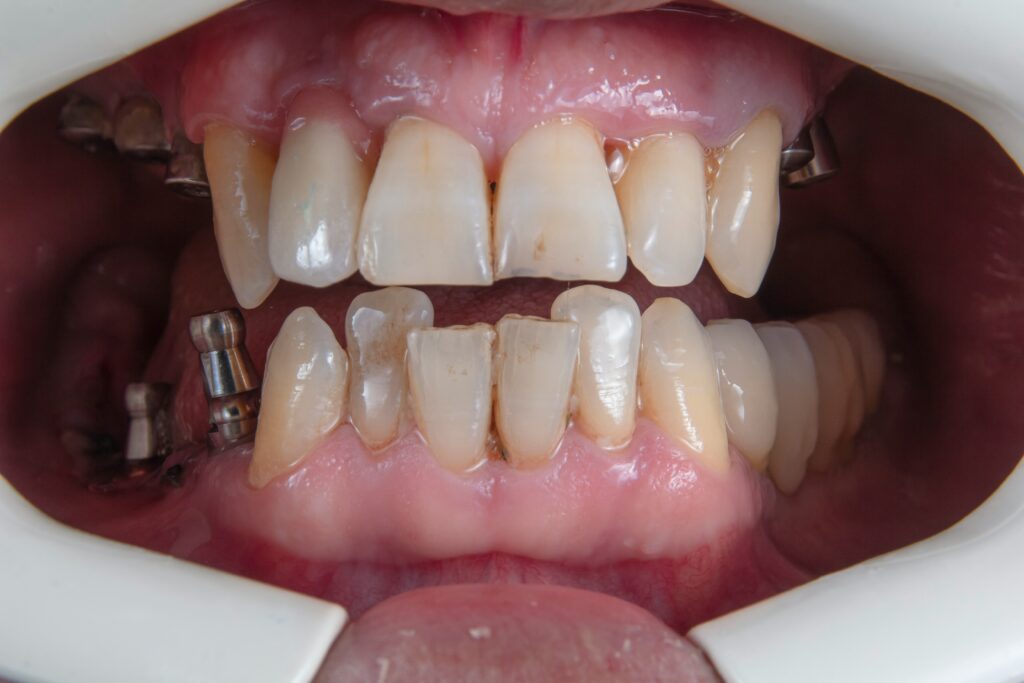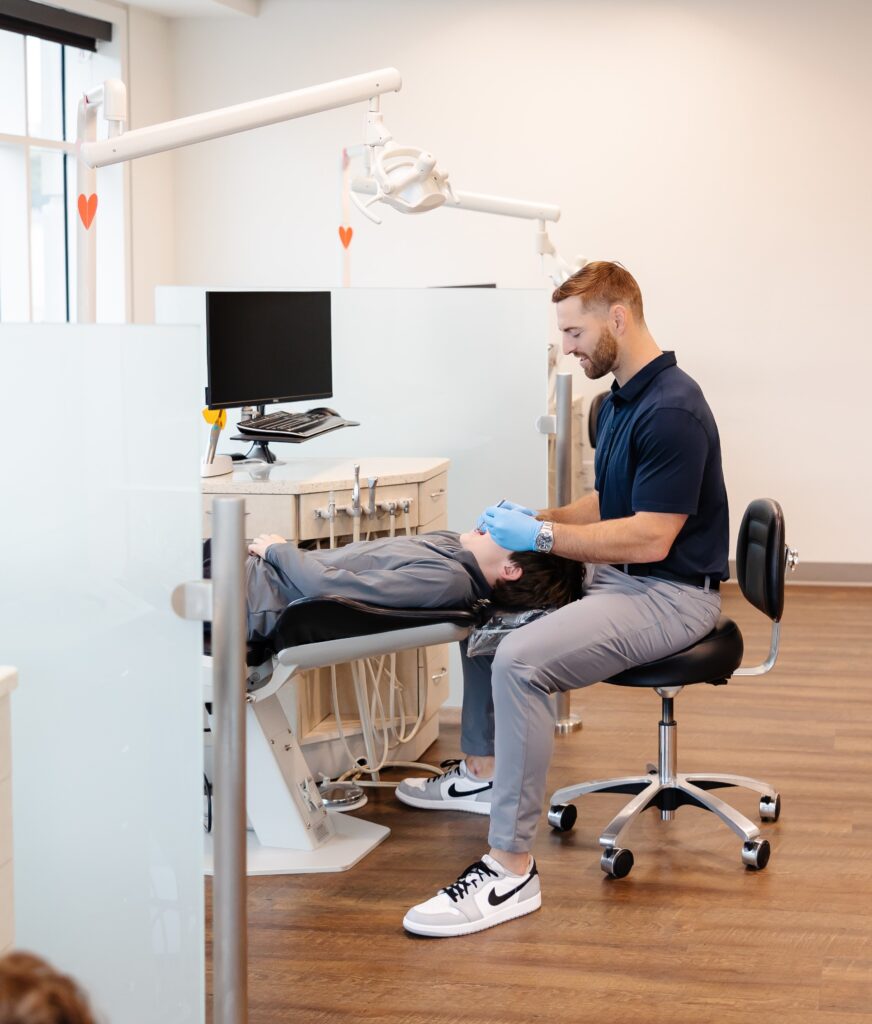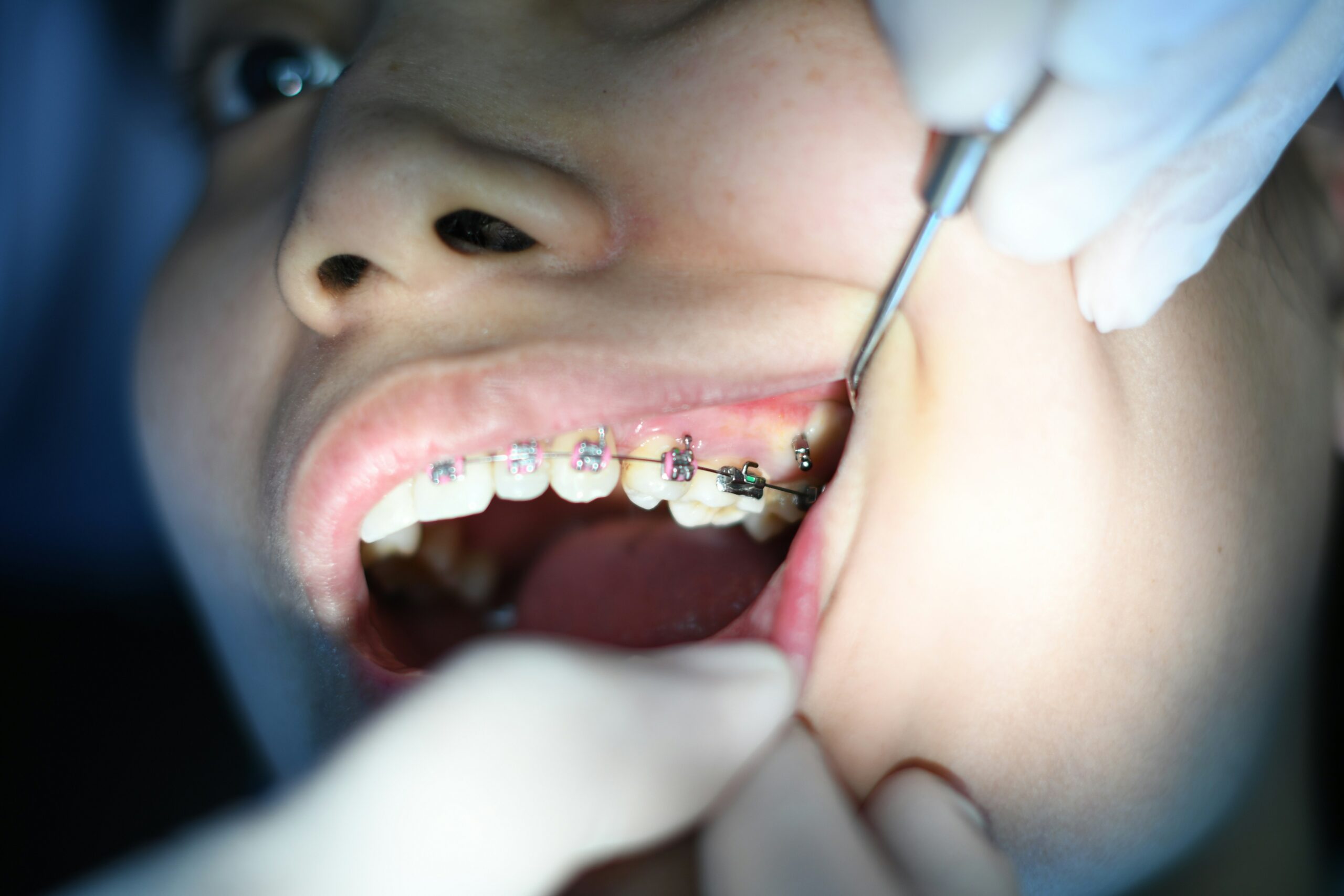When most people think about orthodontic treatment, they picture straighter teeth and a more confident smile. While these are certainly important benefits, modern orthodontics goes far beyond cosmetic improvements. At Bean Orthodontics in Plano, Texas, Dr. Blake Bean understands airway orthodontics—a comprehensive approach that recognizes the vital connection between jaw alignment, breathing patterns, and overall health.
Understanding the Airway-Orthodontics Connection
Your jaw position directly affects your airway space. When the upper and lower jaw are properly aligned, they create optimal room for the tongue and allow for clear, unobstructed breathing passages. However, when jaws are narrow or misaligned, they can restrict airway space, leading to breathing difficulties that affect both sleep quality and daily life.
Many orthodontic issues—such as crowded teeth, overbites, or underbites—often stem from inadequate jaw development. These same developmental issues that cause crooked teeth can also compromise airway function and create breathing problems that extend beyond dental alignment.
Signs Your Breathing May Be Affected
Many patients in the Plano area focus solely on teeth appearance, unaware that their orthodontic issues might contribute to other health concerns. Common signs that suggest airway issues include chronic mouth breathing, snoring, frequent nighttime waking, morning headaches, and daytime fatigue despite adequate sleep.
Children may exhibit difficulty concentrating in school, behavioral issues, or restless sleep. Parents often notice mouth breathing during the day or noisy sleep. These breathing disorders shouldn’t be ignored, as they may indicate that jaw development is affecting proper breathing and could contribute to sleep apnea later in life.

How Orthodontic Treatment Addresses Breathing Issues
Modern orthodontic treatment can significantly improve airway function through several approaches. Palatal expansion is particularly beneficial for children whose upper jaws haven’t developed fully. By gradually widening the upper jaw, we create more space for the tongue and improve nasal breathing capacity, addressing airway obstruction at its source.
Proper bite alignment also plays a crucial role in maintaining a healthy airway. When we correct overbites, underbites, or crossbites, we’re repositioning the jaws to optimize airway space. This leads to immediate improvements in breathing patterns and sleep quality, moving patients from mouth breathing toward proper nasal breathing.
For growing children, early intervention through dentofacial orthopedics can guide jaw development to prevent airway restrictions from developing. This proactive approach can set children up for a lifetime of better breathing and sleep, avoiding complex treatments like surgical orthodontics later.
The Sleep and Health Benefits

Improved airway function through orthodontic treatment often leads to dramatic improvements in sleep quality. Patients frequently report falling asleep more easily, fewer nighttime interruptions, and waking up refreshed. Proper breathing is essential for reaching deep, restorative sleep stages and preventing sleep-related breathing disorders.
Better sleep quality has cascading effects on overall health. Improved concentration, better mood regulation, enhanced immune function, and increased energy levels are common benefits. Many patients find that addressing airway concerns through orthodontics provides unexpected relief beyond achieving straight teeth.
The benefits extend beyond sleep. Proper nasal breathing helps filter and humidify air while promoting better oxygen absorption. Some patients experience improved exercise performance as breathing efficiency increases. Others notice reduced headaches or jaw pain as their bite aligns properly.
Airway-Focused vs. Traditional Orthodontics
While traditional orthodontics focuses primarily on achieving straight teeth and proper bite alignment, airway-focused orthodontics takes a more integrative approach. This specialized field considers how orthodontic correction impacts breathing function, tongue posture, and overall airway health.
Dr. Bean’s expertise means he can identify potential airway problems during initial evaluation and incorporate solutions into treatment plans. Whether patients need braces or other treatments, he evaluates each case with airway health in mind, ensuring treatment addresses both aesthetic goals and functional breathing needs.
Why Choose Bean Orthodontics in Plano?

Dr. Bean’s expertise in airway orthodontics sets Bean Orthodontics apart from traditional practices in the Plano, Richardson, Frisco, and Carrollton areas. His specialized training in dentofacial orthopedics means he’s equipped to address the complex relationship between jaw development, orthodontic issues, and airway function.
This comprehensive approach means patients receive treatment that creates beautiful smiles while optimizing breathing and sleep quality. It’s orthodontic care that considers the whole person, supporting both oral health and overall wellness.
Taking the Next Step
If you or your child experience breathing difficulties, sleep issues, or orthodontic concerns, a consultation with Dr. Bean can determine whether airway orthodontic treatment might be beneficial. During evaluation at our Plano office, we’ll assess tooth alignment, jaw development, airway space, and breathing patterns.
The connection between orthodontics and airway health represents an exciting frontier in comprehensive dental care. By addressing both aesthetic and functional aspects, we help patients achieve not just straighter teeth, but better overall health through improved breathing and sleep.
Ready to explore how orthodontic treatment might improve your breathing and sleep? Contact Bean Orthodontics in Plano, Texas, to schedule your comprehensive consultation and discover the life-changing benefits of airway-focused orthodontic care.



